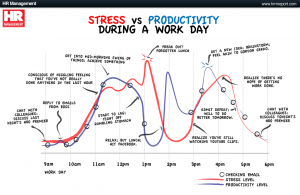The main point of adding content to your website is to improve search engine results, and part of that process means adding unique, high-quality content. As one of the most popular plagiarism checking options, Copyscape gives you some solid information on whether the fabulous content you’re publishing is original or not. However, when you’re just getting started, the report can be a bit confusing. Here’s a quick look at what information shows up in a Copyscape report, what it means for the piece you’re publishing and whether any matches should be of concern.
What Is Copyscape?
Before you publish that awesome content on your website, you’ll want to check that it’s unique, which can be accomplished through Copyscape. The results of that search tell you if there are any matches to the content you’re getting ready to publish. You should note that the free tool only checks websites, not documents. There are many other tools available in Copyscape’s Premium toolkit, but that will have a monthly fee involved.
What If I Get a Match?
The question remains of what to do if there are matches? Typically, the free Copyscape tool will tell you how many matches there are to the content you’re getting ready to publish. It will also provide you with the web address of those matches in the form of a clickable link. This gives you the option of checking each match to determine whether plagiarism has taken place or not. This is important, as Copyscape only finds matches to similar content; it doesn’t determine whether plagiarism has happened.
What About False Positives?
One of the first areas to consider is whether it’s a false positive. This is a fairly common issue in Copyscape, and typically happens when boilerplate text is used. For example, if you always wrap up your blog posts with, “For more information, please feel free to contact our sales team,” you’ll probably have multiple matches on that text.
Another common source of Copyscape matches is direct quotes that are written into the piece that have appeared in other locations on the internet. As an example, I ran a search on a news article dealing with quotes from the 2018 Winter Games. As those quotes were used in multiple articles, the search came up with multiple matches.
When you’re looking at potential matches, it’s important to remember these potential false positives and whether they are truly examples of plagiarism. But if the seductive content you’re reading comes up with a significant number of matches, or matches that are outside of the usual false positives, you’ll want to have revisions made on the piece so that it is truly unique.
When you have a grasp of what Copyscape can do for your content creation process, you can take advantage of the report to ensure you’re getting everything you need out of that scintillating copy that was written for your project. Though Copyscape’s rates are going through changes at the moment, you don’t need to worry about it. When you have your writing needs handled through Writer Access, a Copyscape report is automatically run on every piece of content you purchase. Contact us today to get started on phenomenal new content for your project.







